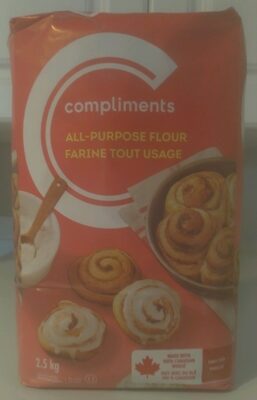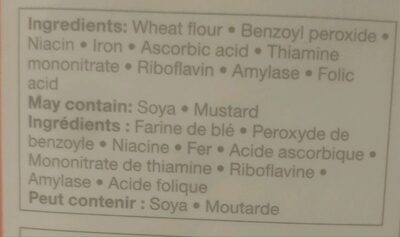All-Purpose Flour - Compliments - 2.5 kg
This product page is not complete. You can help to complete it by editing it and adding more data from the photos we have, or by taking more photos using the app for Android or iPhone/iPad. Thank you!
×
Barcode: 0055742549973 (EAN / EAN-13) 055742549973 (UPC / UPC-A)
Quantity: 2.5 kg
Brands: Compliments
Categories: Plant-based foods and beverages, Plant-based foods, Cereals and potatoes, Cereals and their products, Flours, Cereal flours, Wheat flours
Labels, certifications, awards:
Kosher, Orthodox Union Kosher, Enriched-wih-vitamins
Link to the product page on the official site of the producer: https://www.compliments.ca/en/products/a...
Stores: Safeway
Countries where sold: Canada
Matching with your preferences
Environment
Carbon footprint
Packaging
Transportation
Report a problem
Data sources
Product added on by kiliweb
Last edit of product page on by binzyboi.
Product page also edited by teolemon, yuka.KJlTMP-EQPQzQ9_-26wxwxegFrfLJeVYKHMvog, yuka.sY2b0xO6T85zoF3NwEKvlhRVc4HjozzkGDHSkm2H6c-wBcziRNB8_pXTA6s.









